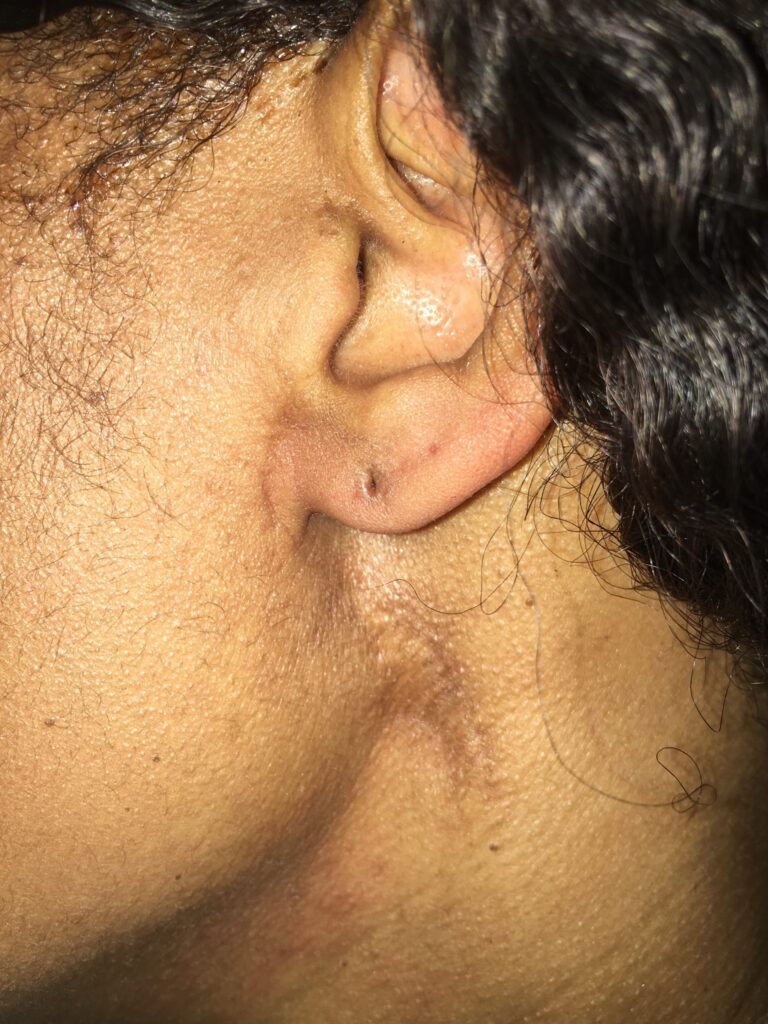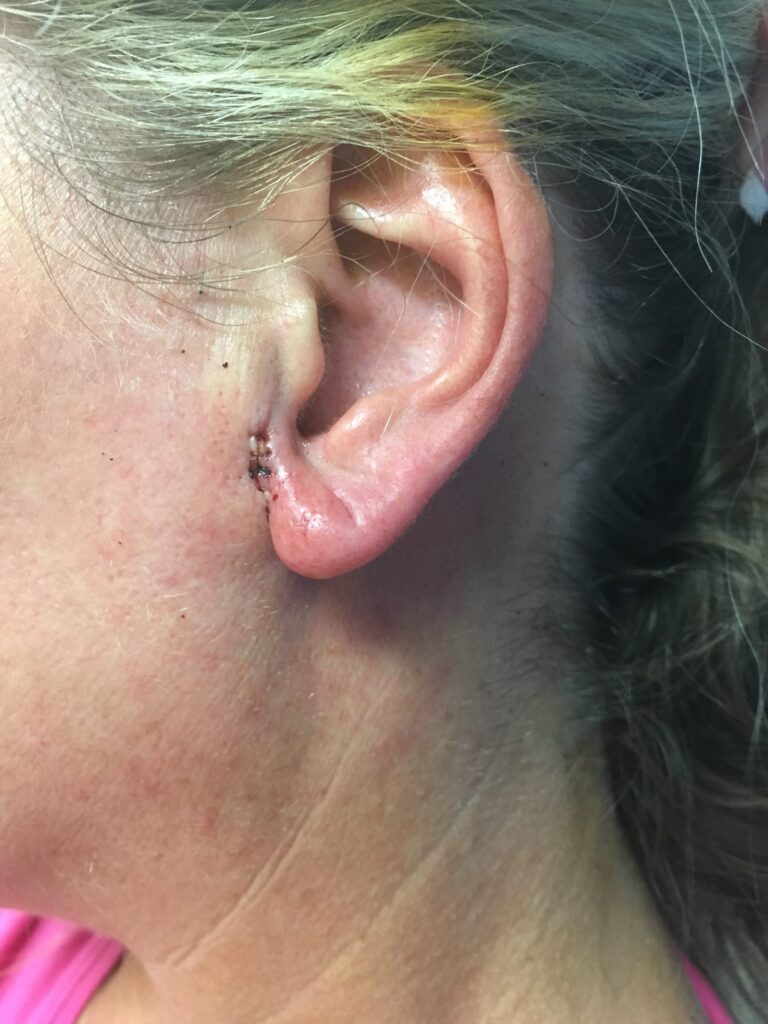Minimally Invasive Parotid Surgery

Parotid surgery is recommended for removal of neoplasms (abnormal growths of cells), and occasionally for removal of salivary stones. What is a minimally invasive parotid surgery? To understand the minimally invasive approach for parotid surgery, one must first understand the traditional surgical approach.
Traditional Parotid Surgery.
Parotidectomy, or surgical removal of the parotid gland, used to require a visible incision on the side of the neck below the ear. Patients who have this approach for parotid surgery are generally kept in the hospital overnight to monitor a drain in their neck and receive intravenous pain medication

Another downside of traditional parotid surgery is the greater visibility of the jawbone after the parotid tissue has been removed. Traditionally, the skin overlying the wound was simply closed back together which can lead to a permanent sunken in appearance below the ear and greater visibility of the jawbone.

These types of incisions are still performed by the majority of surgeons performing parotid surgery. If you are in need of parotid surgery and have been told that this is the only way to have this operation performed, please keep reading. There’s a better way of having this operation performed: through minimally invasive parotid surgery.
Minimally Invasive Parotid Surgery
Minimally invasive parotid surgery techniques are currently utilized here in Atlanta by our practice to allow the same operation to be performed with no permanent visible incision on the face or the neck. In addition to being more cosmetically appealing, this approach is less painful and allows the procedure to be performed as an outpatient. Most patients take pain medication for only a day or two after surgery.

You have to look closely to see that this patient had an operation performed the day before this picture was taken. The minimally invasive approach is equivalent to the traditional operation in terms of adequacy of tumor resection and postoperative facial weakness. However, because there is less surgical dissection, the risk of wound healing complications such as fluid collection and wound dehiscence are dramatically decreased.
This patient also had an abdominal fat graft harvested from the umbilicus (belly button). This reconstructive procedure is performed to prevent the sunken in appearance after traditional parotid surgery. It leaves no visible scar (unless you were to examine the inside of the belly button with a magnifying glass) on the abdomen. An additional benefit from having a fat graft reconstruction after parotid surgery is a decreased risk of Frey Syndrome. This phenomenon occurs as a side effect from traditional parotid surgery where the nerves that supply the parotid gland grow into the skin to supply the sweat glands on the side of the face. The result is gustatory sweating, or sweating on the side of the face when you are eating. Not the end of the world, but this is generally a nuisance you would rather do without.
Give our office a call or email message if you need a parotidectomy evaluation.
